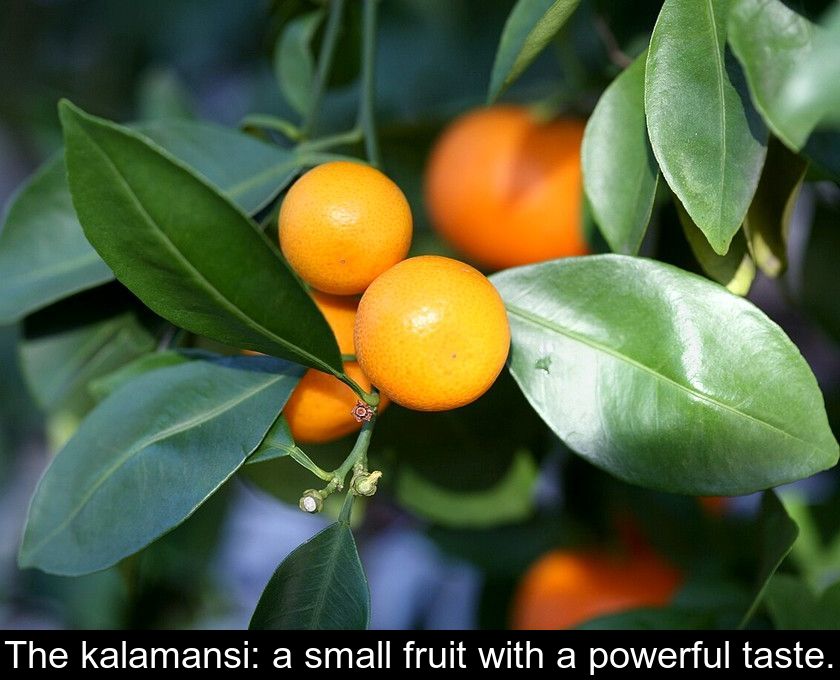The Kalamansi: A Small Fruit With A Powerful Taste.
Exotic fruit still unknown in Europe, kalamansi is a small citrus with a powerful taste. Its flavor evokes both the acidity of lemon and the fragrance of mandarin and kumquat. Here are 5 things to know about this fruit also called the Philippine lemon.
1- He goes by many names.
Maybe you have never heard of the kalamansi because this exotic fruit is still not well known in Europe. Or maybe you know it by another name because this citrus fruit, native to Asia, has many names and nicknames.
It is also called calamansi with a c, calamondin, lime from the Philippines, lemon from the Philippines, or apartment orange! The Chinese nickname it the orange of the four seasons and Filipinos call it limonsito.
2- It is the result of a complex hybridization.
This small citrus fruit, which should not be confused with the kumquat or the pontianak, has the botanical name Citrus microcarpa. Its origin remains somewhat mysterious as it is the result of a complex hybridization.
According to the genetic data we have, the kalamansi is a hybrid between the orangequat (Citrus japonica x Citrus reticulata), the kumquat (Citrus japonica), and the mandarin (Citrus deliciosa).
This fruit is said to have appeared in China before spreading to Indonesia and the Philippines, and later on to India and throughout Southeast Asia.
3- It is a decorative indoor orange tree.
Even though the fruits of the calamondin are edible and widely used in Asian cuisine, in Europe it is mainly appreciated for its decorative aspect.
The calamondin offers a fragrant and recurrent flowering, as well as small round and colorful fruits, measuring 3 to 4 cm in diameter, which remain on the tree for a long time.
This small tree blooms and bears fruit throughout the year, making it a very decorative indoor orange tree. Like other trees in the Rutaceae family, its small white flowers have a sweet fragrance.
Its foliage, dark green and shiny on top and paler underneath, contrasts well with the color of the small fruits, which turn yellow-orange when ripe.
This shrub is well adapted to container cultivation as it can withstand the warm and dry atmosphere of apartments in winter. However, it is not always possible to cultivate it outdoors as it is susceptible to frost (it is hardy up to -1°C).
4- The Philippines is the main producing country.
Kalamansi is mainly grown in the Philippines but also in Hawaii and the United States.
The Philippines is the world's top producer of this citrus fruit, especially in the province of Bengkulu, which produced 120,000 tonnes in 2020.
In this region, the fruit is mainly cultivated to be transformed into juice, as calamondin juice is a widely used condiment in Philippine cuisine. In the Philippines, the juice of the fruit is used while it is still green.
Just like lemon juice, calamondin juice is rich in vitamin C and is believed to have many health benefits. In Asia, it is even said that the juice of this fruit is beneficial for skin beauty and is used to purify and whiten the skin!
5- It has multiple uses in the kitchen.
In Southeast Asia, this fruit is mainly used as juice in beverages such as sodas and "calamansi juice" diluted with water and sugar.
In Filipino cuisine, the juice of this citrus fruit is also used as a condiment in dishes and marinades along with soy sauce, vinegar, or chili.
When the kalamansi fruit is ripe, its skin is sweet like that of a kumquat. It is also used to flavor meat and fish dishes as well as desserts such as marmalades, cakes, and ice creams. In fact, it was in the form of a sorbet that I first tasted this small but powerful exotic fruit!
In Europe, it is starting to be used in desserts and cocktails for its flavor that reminds both of tangerine and bitter orange. If you haven't tried this citrus fruit yet, it is likely that you will soon have the opportunity to taste it as its aromatic power and uniqueness are increasingly attracting chefs and mixologists.








